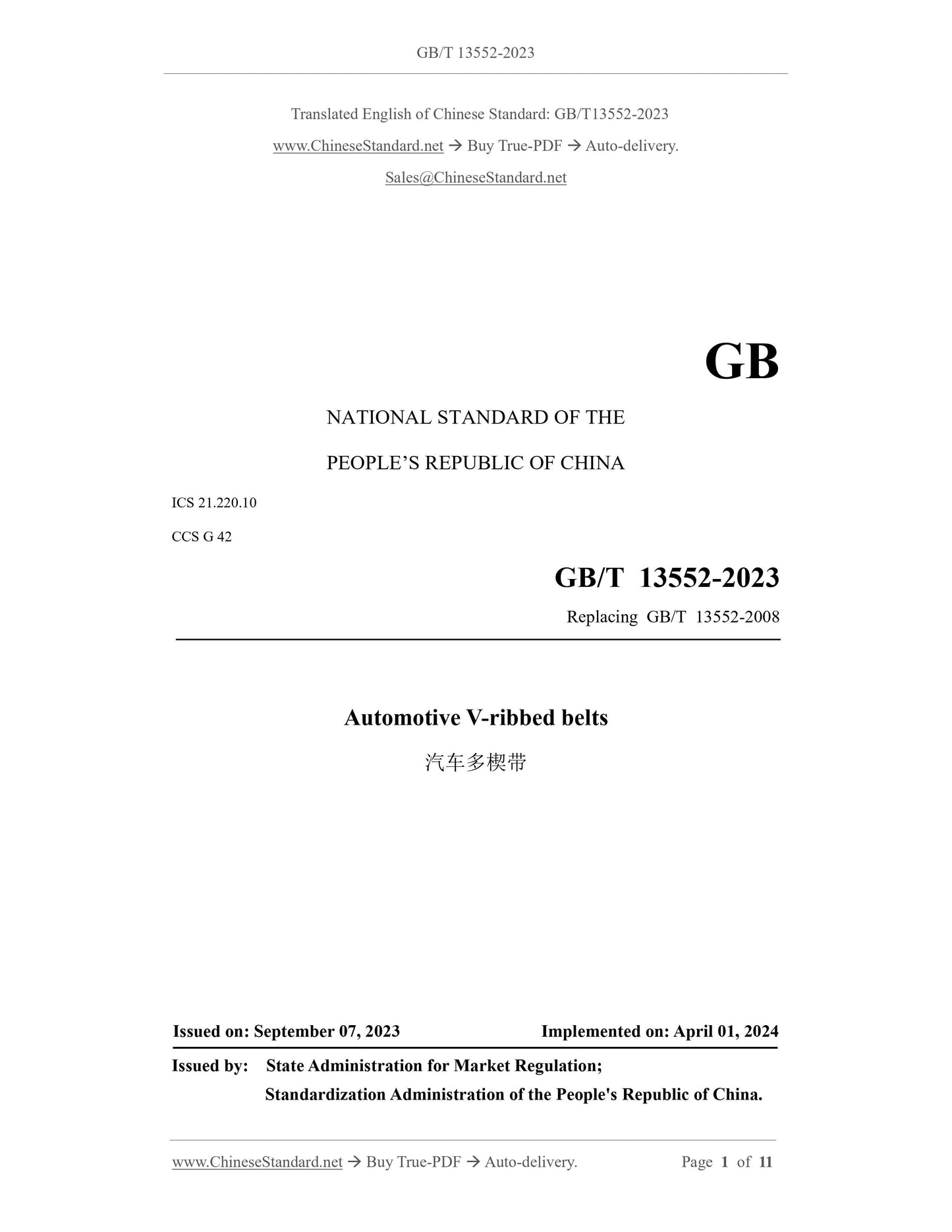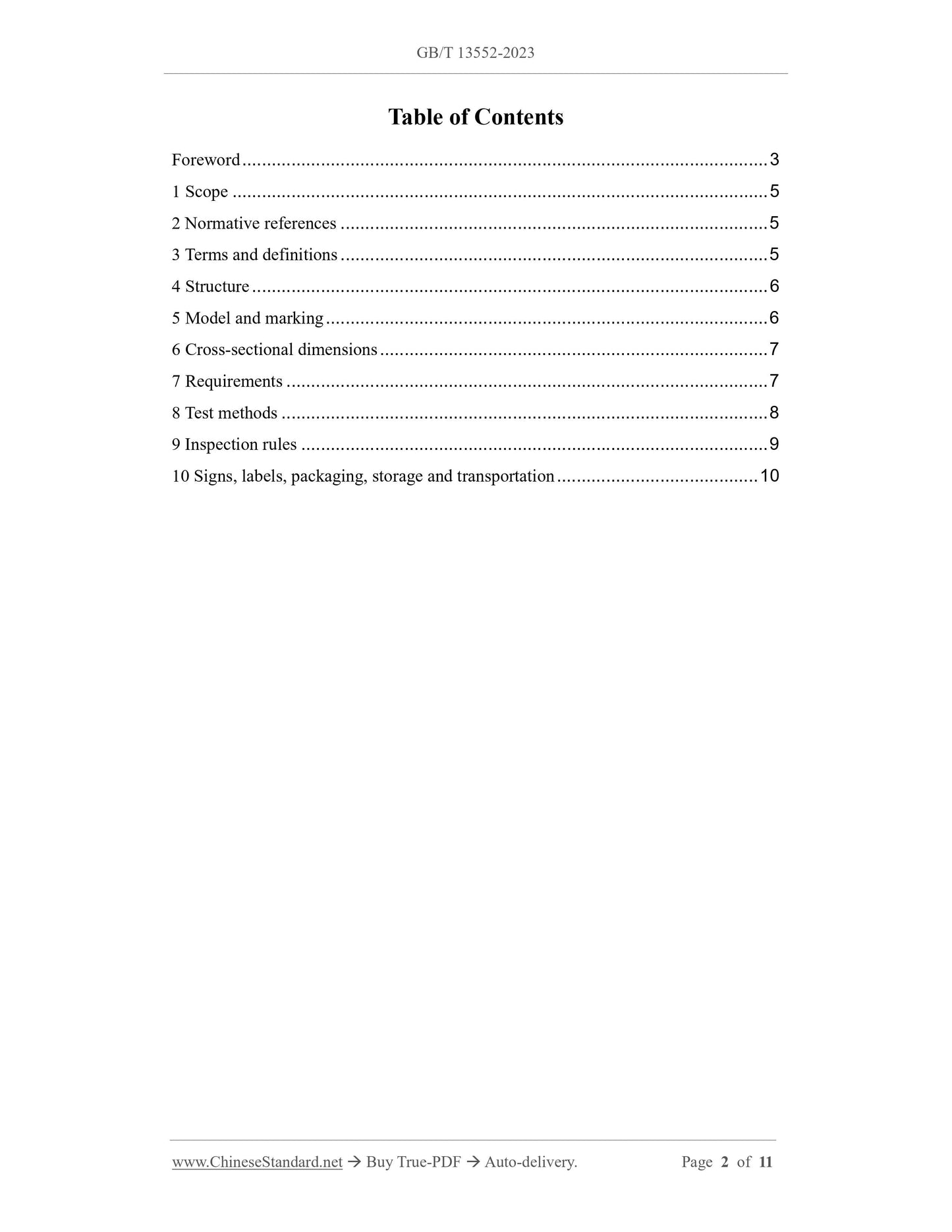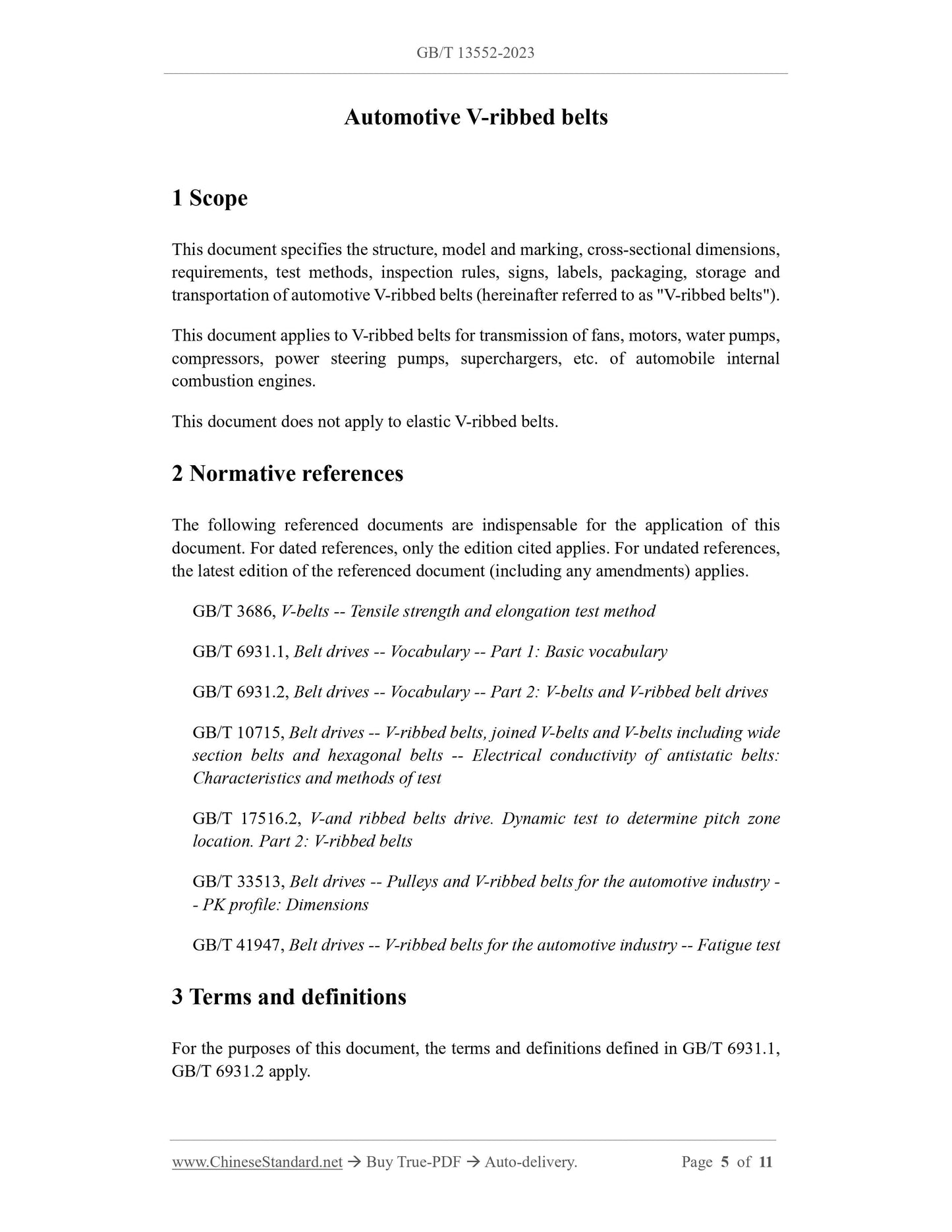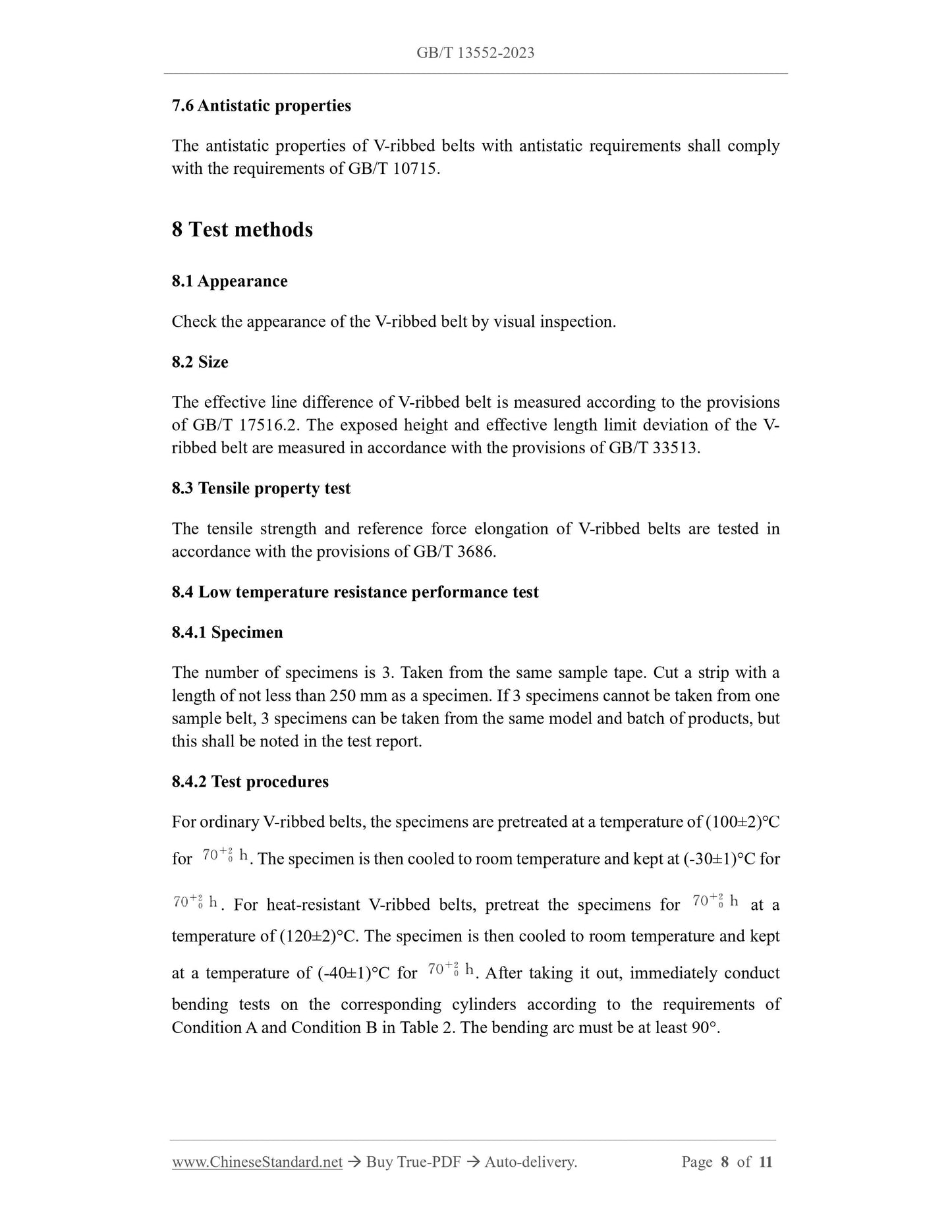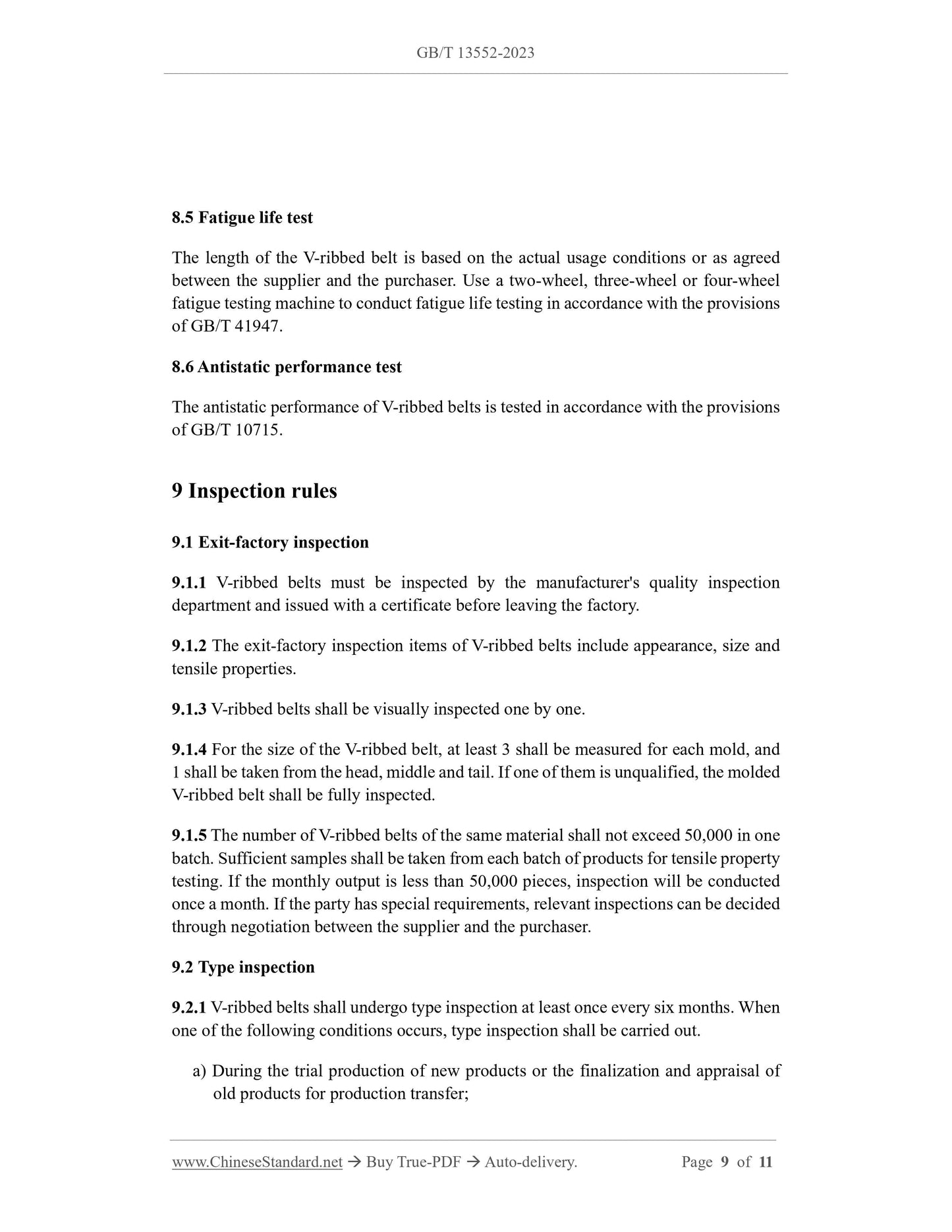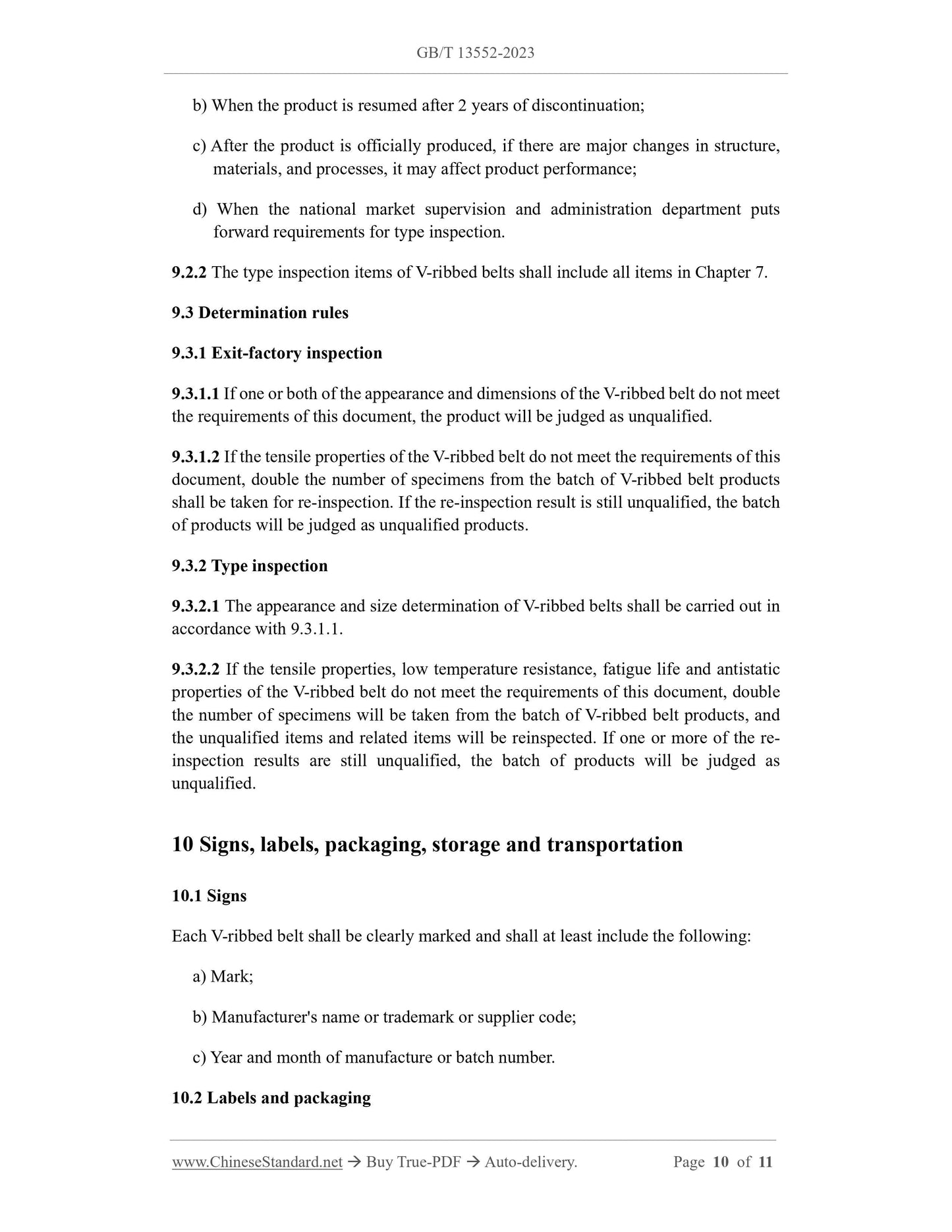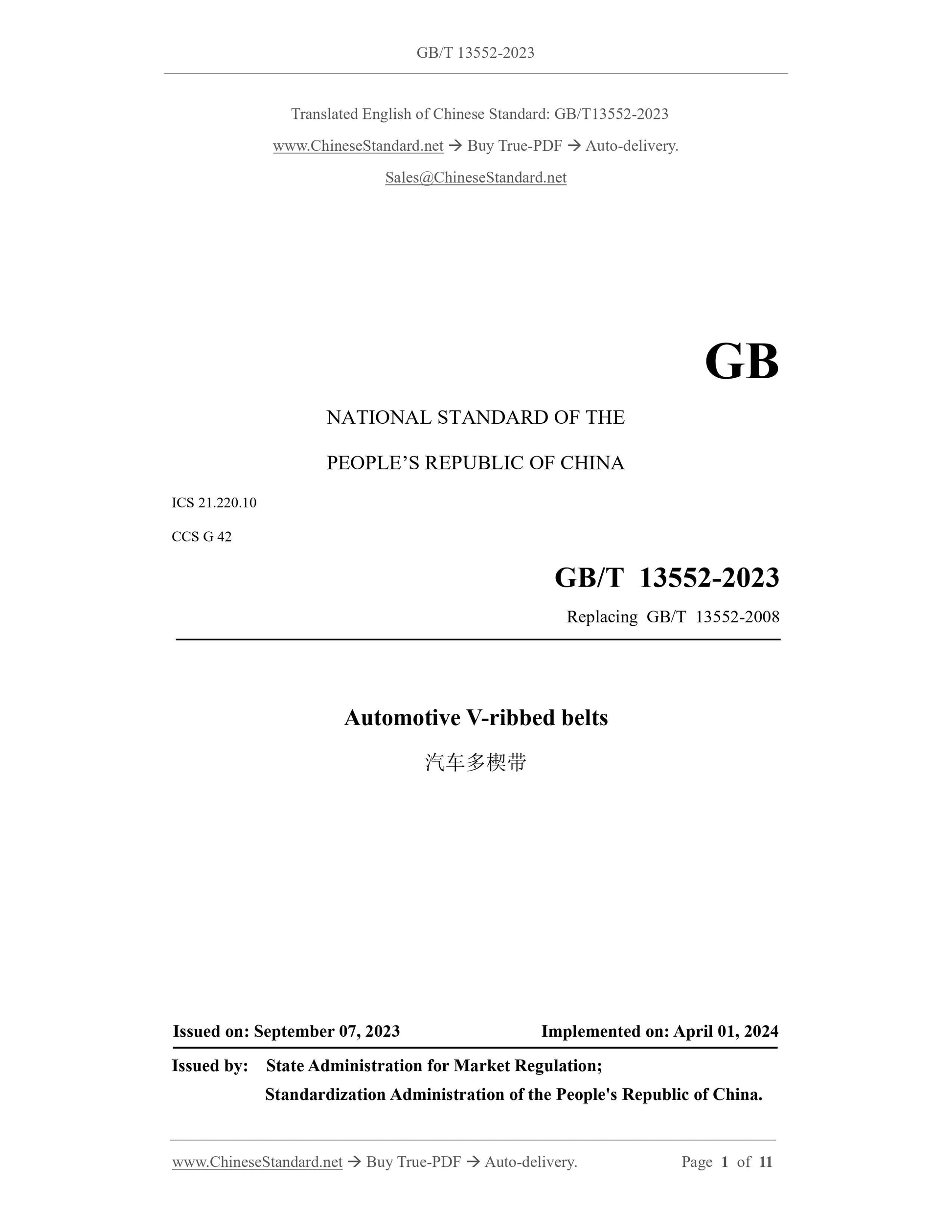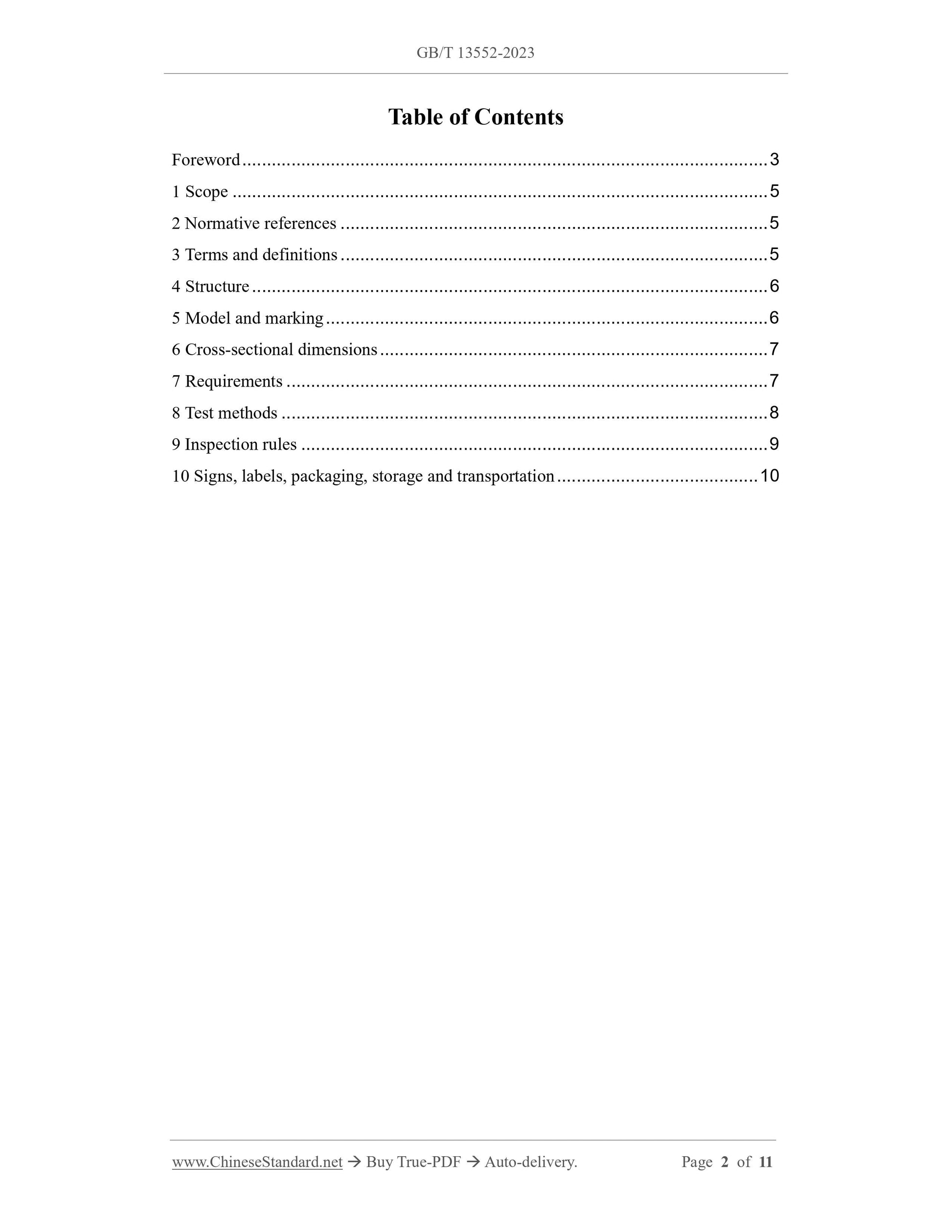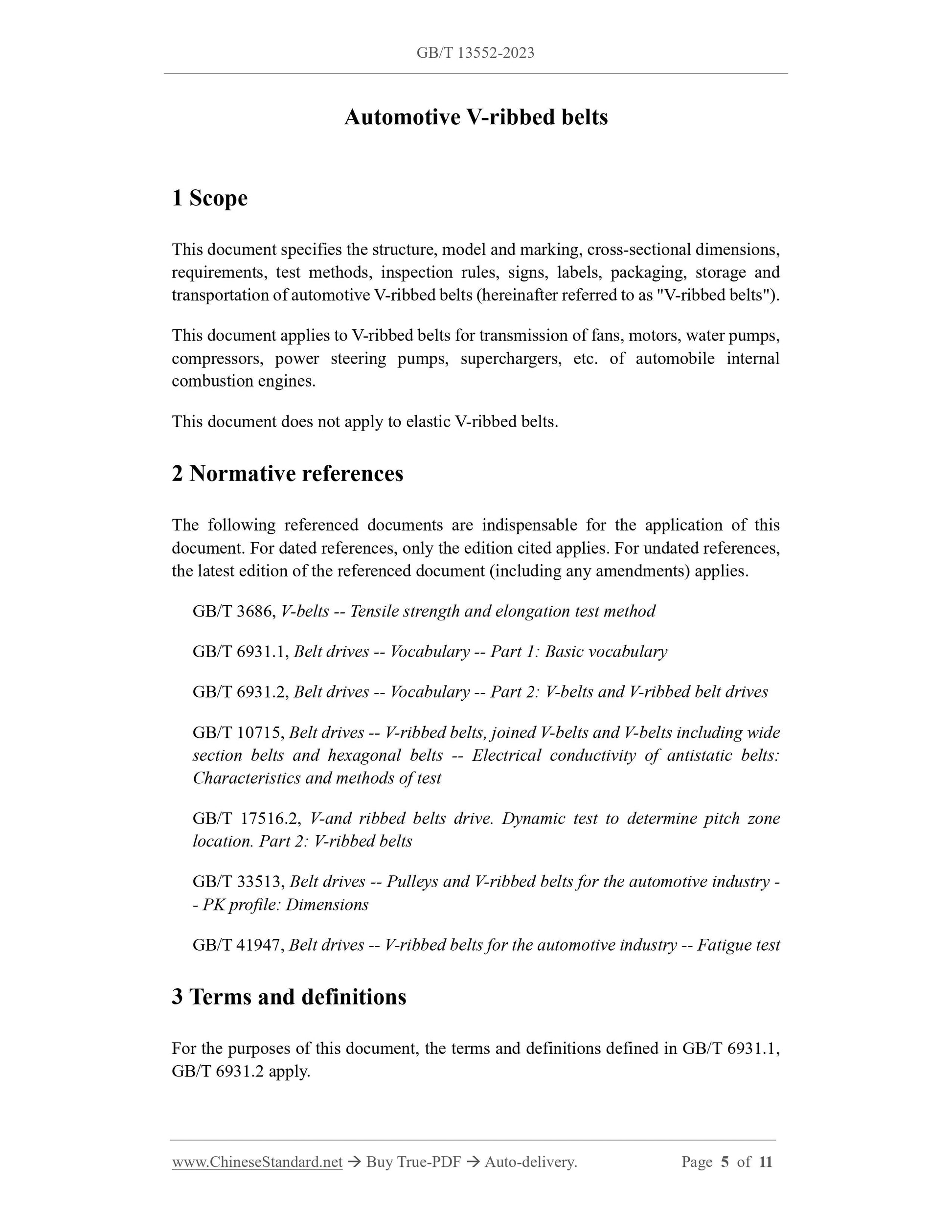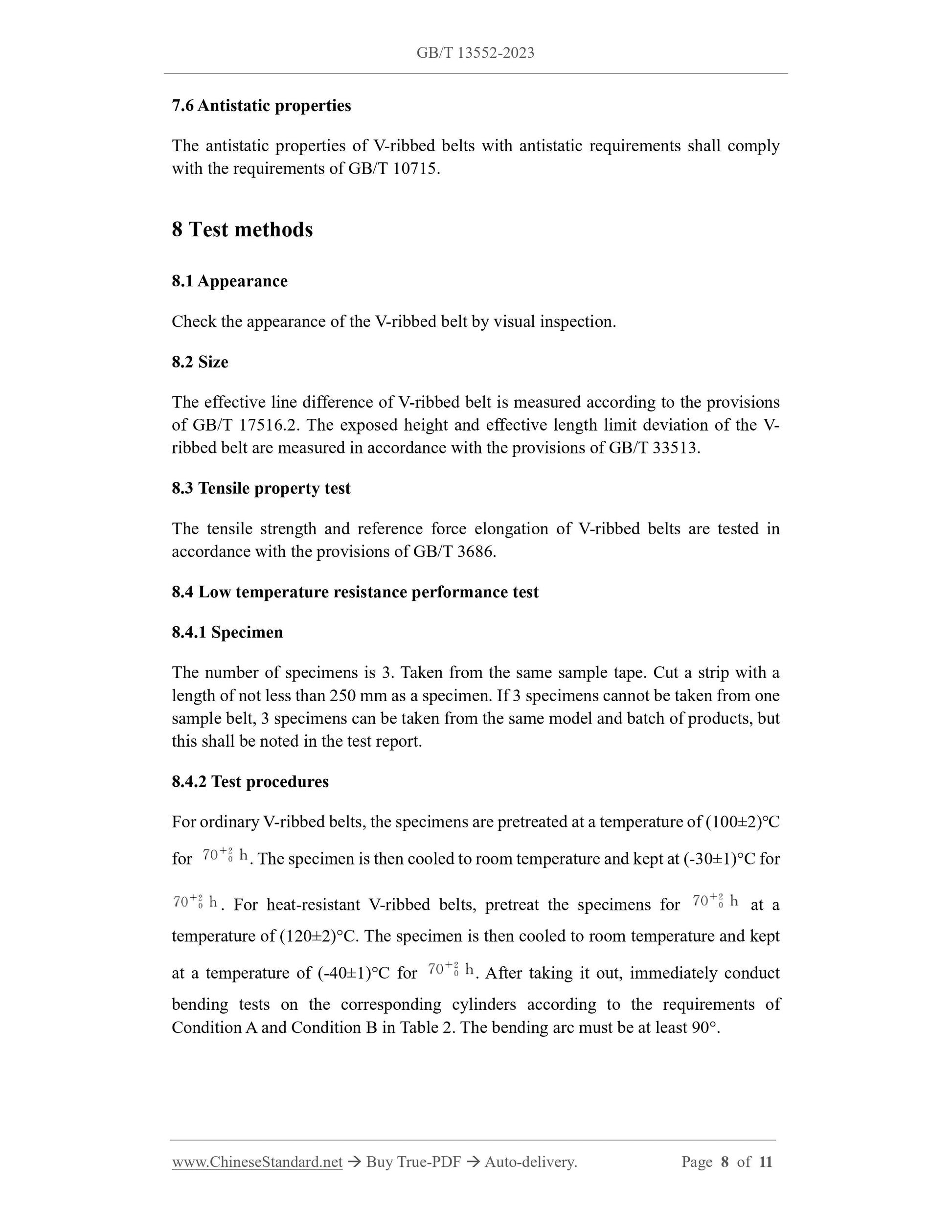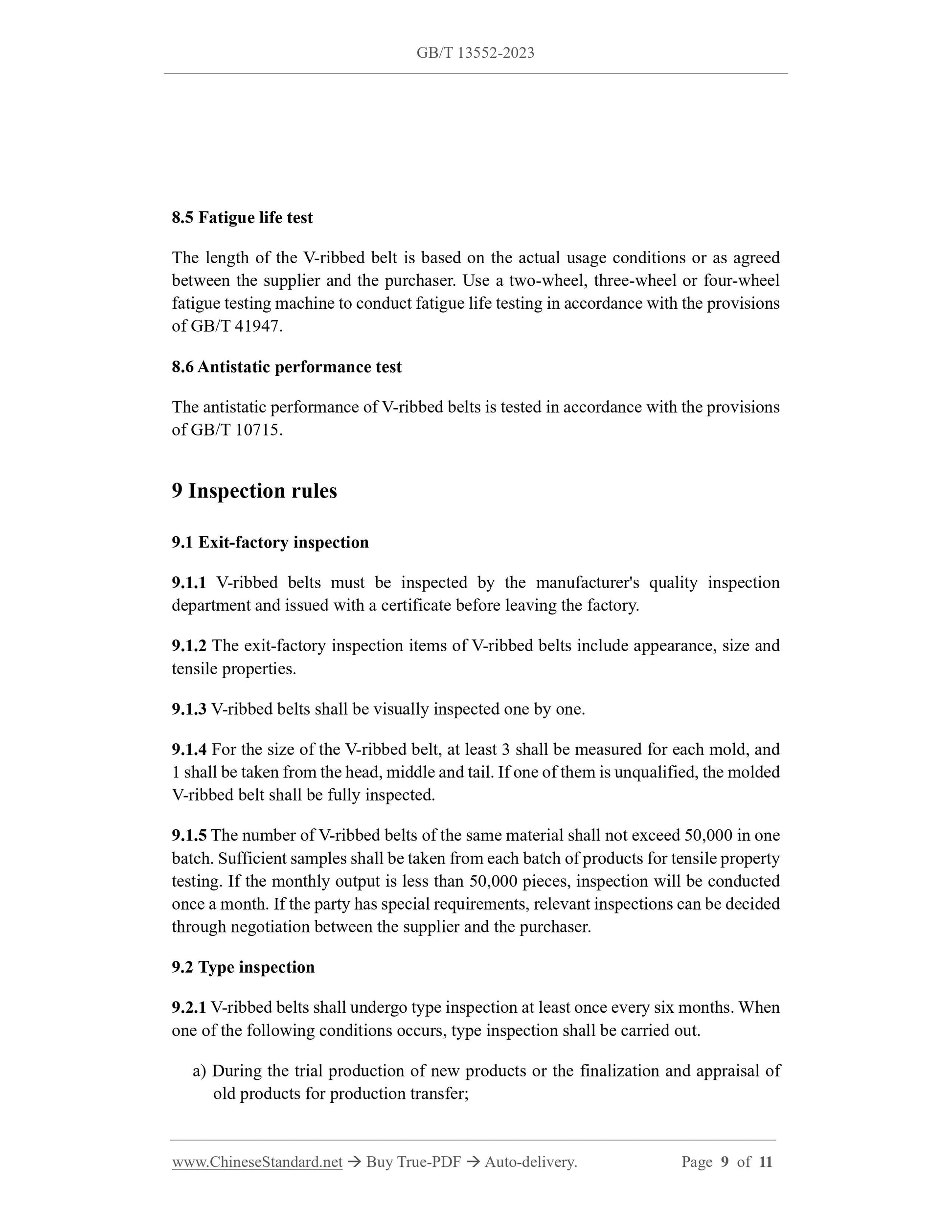1
/
of
6
www.ChineseStandard.us -- Field Test Asia Pte. Ltd.
GB/T 13552-2023 English PDF (GB/T13552-2023)
GB/T 13552-2023 English PDF (GB/T13552-2023)
Regular price
$170.00
Regular price
Sale price
$170.00
Unit price
/
per
Shipping calculated at checkout.
Couldn't load pickup availability
GB/T 13552-2023: Automotive V-ribbed belts
Delivery: 9 seconds. Download (and Email) true-PDF + Invoice.Get Quotation: Click GB/T 13552-2023 (Self-service in 1-minute)
Newer / historical versions: GB/T 13552-2023
Preview True-PDF
Scope
This document specifies the structure, model and marking, cross-sectional dimensions,requirements, test methods, inspection rules, signs, labels, packaging, storage and
transportation of automotive V-ribbed belts (hereinafter referred to as "V-ribbed belts").
This document applies to V-ribbed belts for transmission of fans, motors, water pumps,
compressors, power steering pumps, superchargers, etc. of automobile internal
combustion engines.
This document does not apply to elastic V-ribbed belts.
Basic Data
| Standard ID | GB/T 13552-2023 (GB/T13552-2023) |
| Description (Translated English) | Automotive V-ribbed belts |
| Sector / Industry | National Standard (Recommended) |
| Classification of Chinese Standard | G42 |
| Classification of International Standard | 21.220.10 |
| Word Count Estimation | 8,893 |
| Date of Issue | 2023-09-07 |
| Date of Implementation | 2024-04-01 |
| Older Standard (superseded by this standard) | GB/T 13552-2008 |
| Issuing agency(ies) | State Administration for Market Regulation, China National Standardization Administration |
Share
